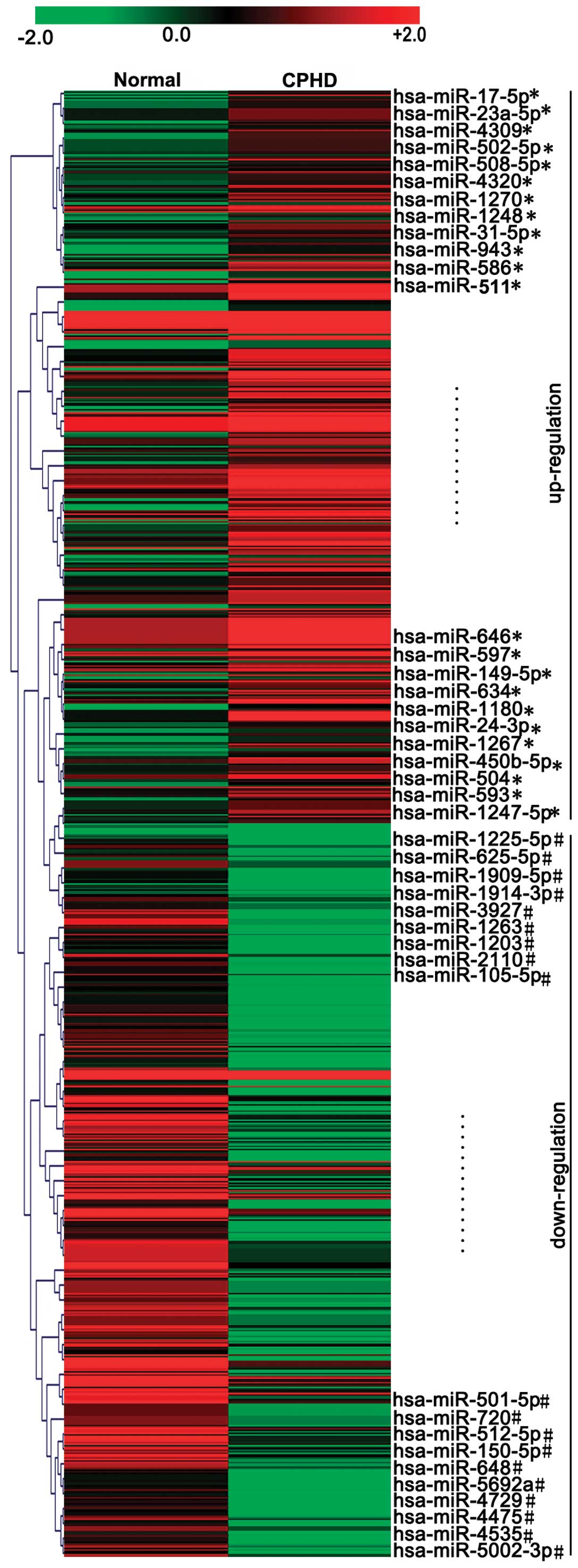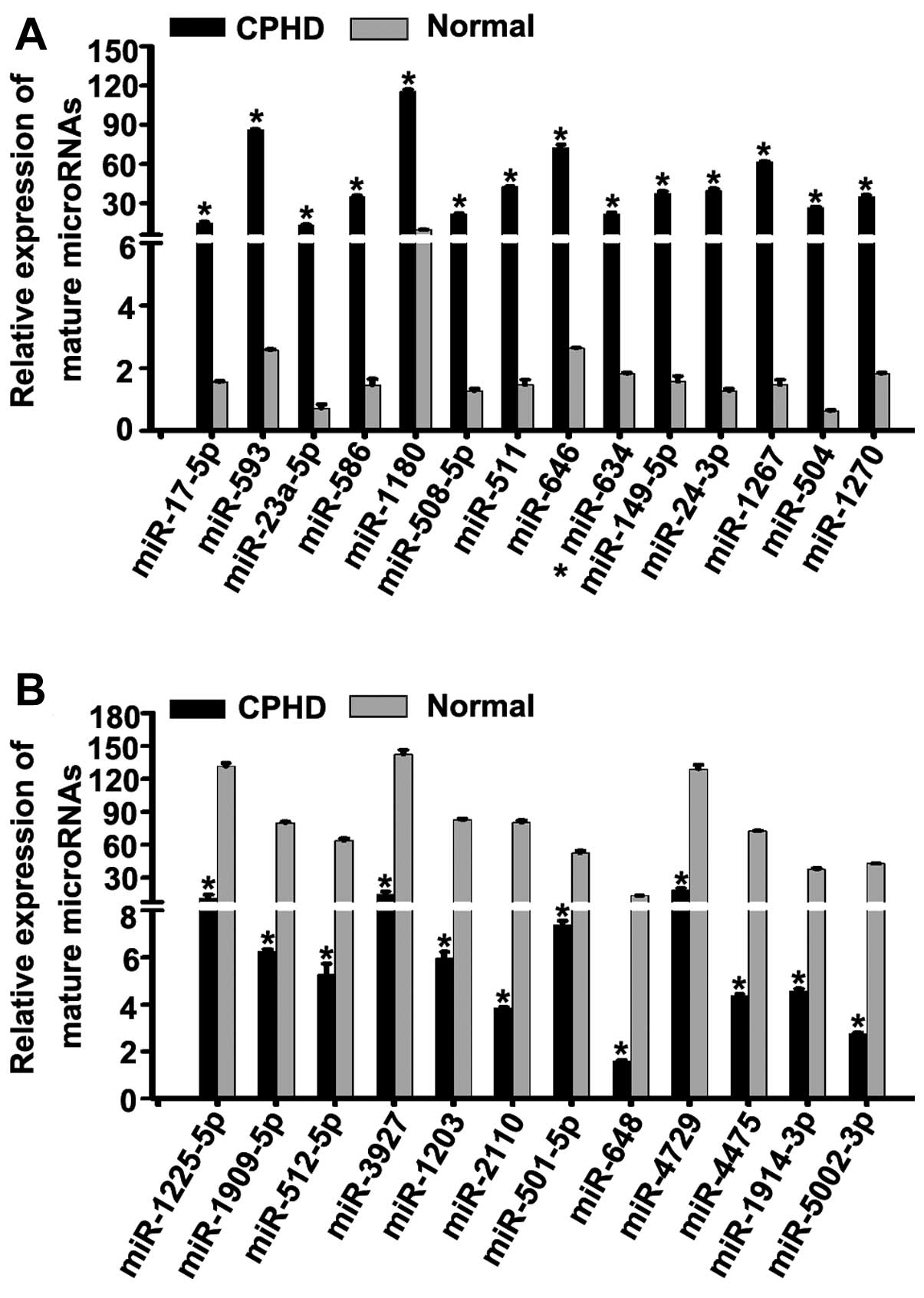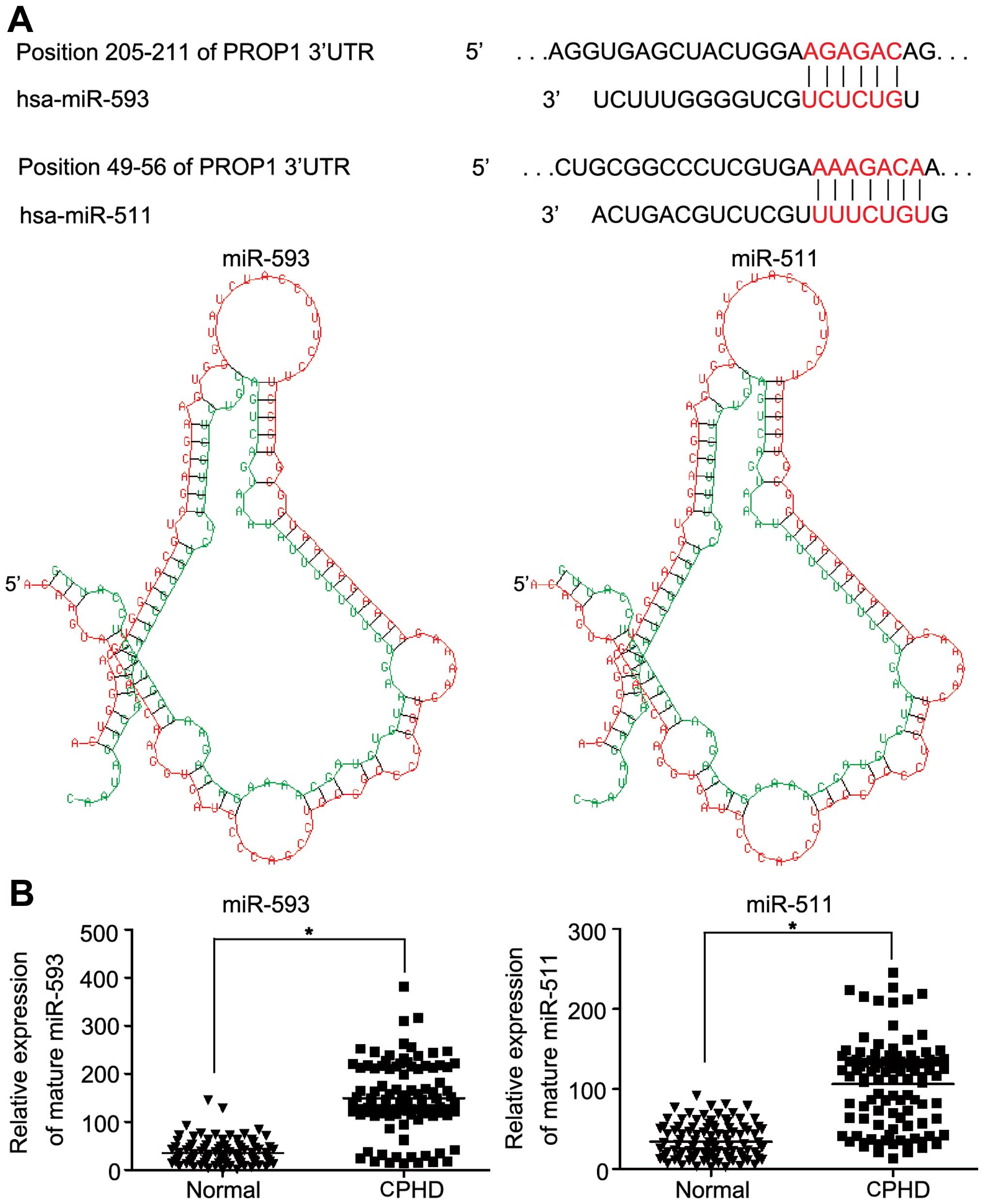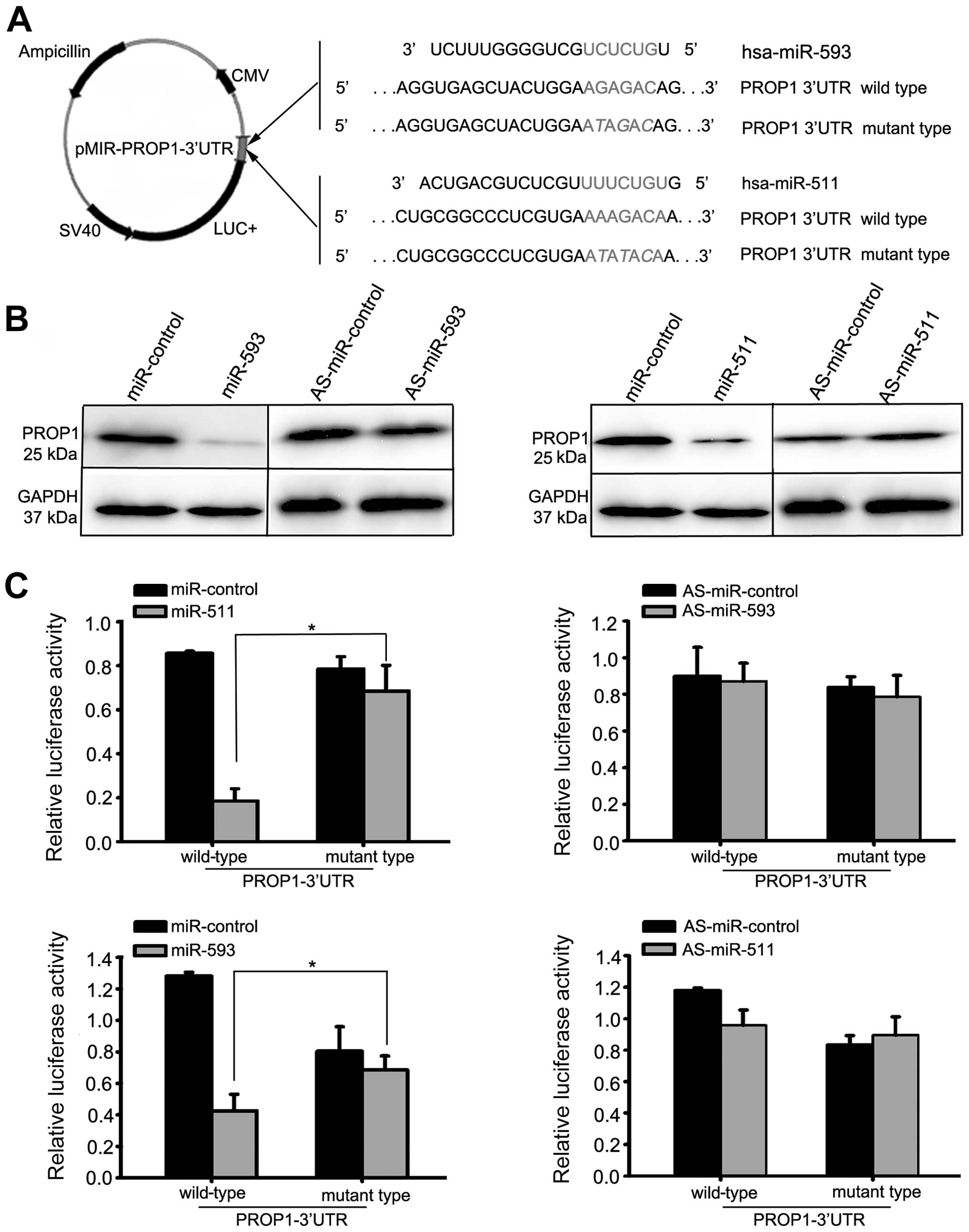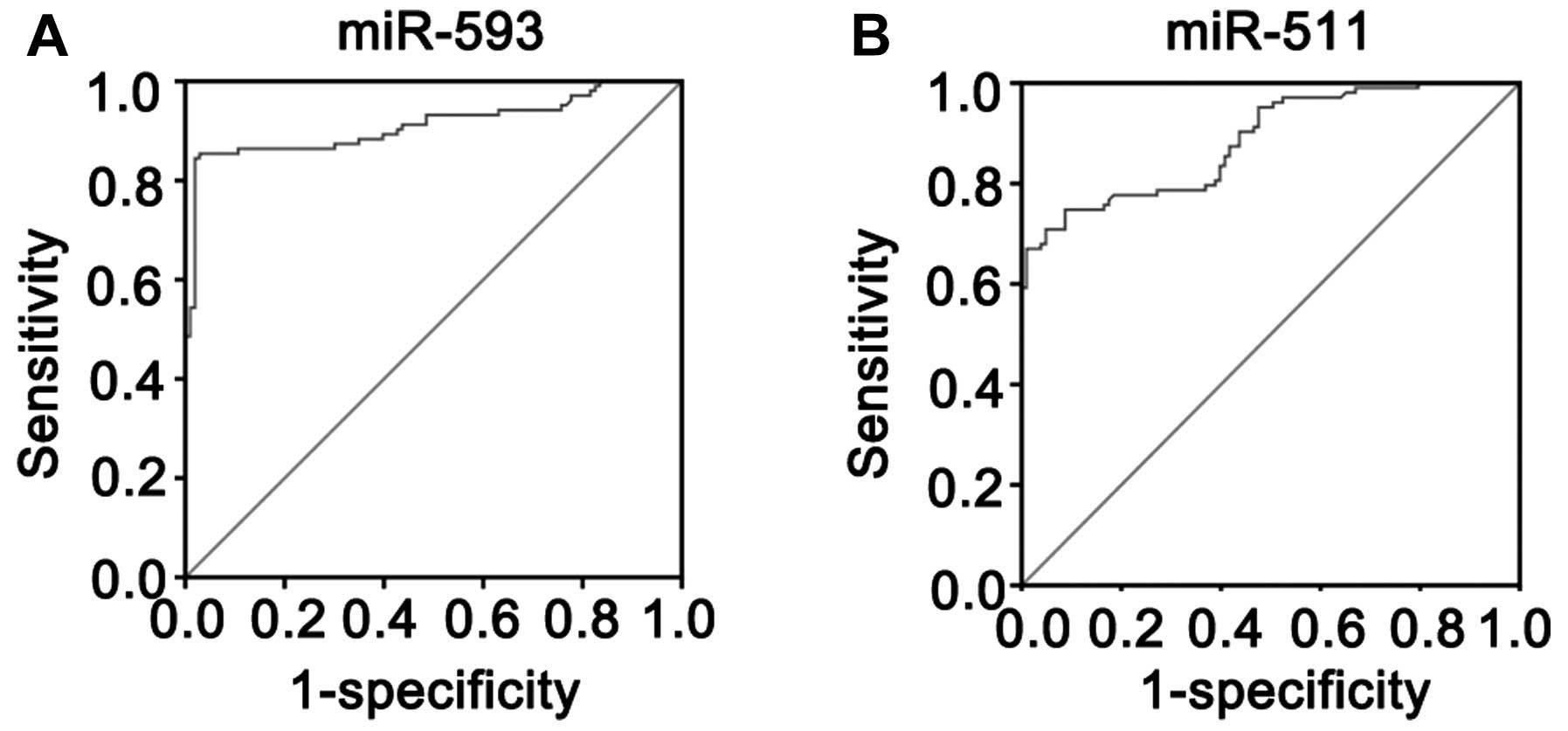|
1
|
Kandemir N, Vurallı D, Taşkıran E, Gönç N,
Özön A, Alikaşifoğlu A and Yılmaz E: Frequency of mutations in
PROP-1 gene in Turkish children with combined pituitary hormone
deficiency. Turk J Pediatr. 54:570–575. 2012.
|
|
2
|
Kelberman D, Turton JP, Woods KS, et al:
Molecular analysis of novel PROP1 mutations associated with
combined pituitary hormone deficiency (CPHD). Clin Endocrinol
(Oxf). 70:96–103. 2009. View Article : Google Scholar
|
|
3
|
Reynaud R, Albarel F, Saveanu A, et al:
Pituitary stalk interruption syndrome in 83 patients: novel HESX1
mutation and severe hormonal prognosis in malformative forms. Eur J
Endocrinol. 164:457–465. 2011. View Article : Google Scholar : PubMed/NCBI
|
|
4
|
Tauber M, Chevrel J, Diene G, et al:
Long-term evolution of endocrine disorders and effect of GH therapy
in 35 patients with pituitary stalk interruption syndrome. Horm
Res. 64:266–273. 2005. View Article : Google Scholar : PubMed/NCBI
|
|
5
|
Cruz JB, Nunes VS, Clara SA, Perone D,
Kopp P and Nogueira CR: Molecular analysis of the PROP1 and HESX1
genes in patients with septo-optic dysplasia and/or pituitary
hormone deficiency. Arq Bras Endocrinol Metabol. 54:482–487. 2010.
View Article : Google Scholar : PubMed/NCBI
|
|
6
|
Ward RD, Raetzman LT, Suh H, Stone BM,
Nasonkin IO and Camper SA: Role of PROP1 in pituitary gland growth.
Mol Endocrinol. 19:698–710. 2005. View Article : Google Scholar
|
|
7
|
Cogan JD, Wu W, Phillips JA III, et al:
The PROP1 2-base pair deletion is a common cause of combined
pituitary hormone deficiency. J Clin Endocrinol Metab.
83:3346–3349. 1998.PubMed/NCBI
|
|
8
|
Cohen LE, Wondisford FE, Salvatoni A,
Maghnie M, Brucker-Davis F, Weintraub BD and Radovick S: A ‘hot
spot’ in the Pit-1 gene responsible for combined pituitary hormone
deficiency: clinical and molecular correlates. J Clin Endocrinol
Metab. 80:679–684. 1995.PubMed/NCBI
|
|
9
|
Wu W, Cogan JD, Pfaffle RW, et al:
Mutations in PROP1 cause familial combined pituitary hormone
deficiency. Nat Genet. 18:147–149. 1998. View Article : Google Scholar : PubMed/NCBI
|
|
10
|
Arroyo A, Pernasetti F, Vasilyev VV, Amato
P, Yen SS and Mellon PL: A unique case of combined pituitary
hormone deficiency caused by a PROP1 gene mutation (R120C)
associated with normal height and absent puberty. Clin Endocrinol
(Oxf). 57:283–291. 2002. View Article : Google Scholar
|
|
11
|
Deladoëy J1, Flück C, Büyükgebiz A, et al:
‘Hot spot’ in the PROP1 gene responsible for combined pituitary
hormone deficiency. J Clin Endocrinol Metab. 84:1645–1650.
1999.
|
|
12
|
Parks JS, Brown MR, Hurley DL, Phelps CJ
and Wajnrajch MP: Heritable disorders of pituitary development. J
Clin Endocrinol Metab. 84:4362–4370. 1999.PubMed/NCBI
|
|
13
|
Heneghan HM, Miller N, Lowery AJ, Sweeney
KJ, Newell J and Kerin MJ: Circulating microRNAs as novel minimally
invasive biomarkers for breast cancer. Ann Surg. 251:499–505. 2010.
View Article : Google Scholar : PubMed/NCBI
|
|
14
|
Tijsen AJ, Creemers EE, Moerland PD, de
Windt LJ, van der Wal AC, Kok WE and Pinto YM: MiR423-5p as a
circulating biomarker for heart failure. Circ Res. 106:1035–1039.
2010. View Article : Google Scholar : PubMed/NCBI
|
|
15
|
Vlassov VV, Laktionov PP and Rykova EY:
Circulating nucleic acids as a potential source for cancer
biomarkers. Curr Mol Med. 10:142–165. 2010. View Article : Google Scholar : PubMed/NCBI
|
|
16
|
Cortez MA and Calin GA: MicroRNA
identification in plasma and serum: a new tool to diagnose and
monitor diseases. Expert Opin Biol Ther. 9:703–711. 2009.
View Article : Google Scholar : PubMed/NCBI
|
|
17
|
Hoekstra M, van der Lans CA, Halvorsen B,
et al: The peripheral blood mononuclear cell microRNA signature of
coronary artery disease. Biochem Biophys Res Commun. 394:792–797.
2010. View Article : Google Scholar : PubMed/NCBI
|
|
18
|
Tan KS, Armugam A, Sepramaniam S, Lim KY,
Setyowati KD, Wang CW and Jeyaseelan K: Expression profile of
MicroRNAs in young stroke patients. PLoS One. 4:e76892009.
View Article : Google Scholar : PubMed/NCBI
|
|
19
|
Chen X, Ba Y, Ma L, et al:
Characterization of microRNAs in serum: a novel class of biomarkers
for diagnosis of cancer and other diseases. Cell Res. 18:997–1006.
2008. View Article : Google Scholar : PubMed/NCBI
|
|
20
|
Zampetaki A, Kiechl S, Drozdov I, et al:
Plasma microRNA profiling reveals loss of endothelial miR-126 and
other microRNAs in type 2 diabetes. Circ Res. 107:810–817. 2010.
View Article : Google Scholar : PubMed/NCBI
|
|
21
|
Guo X, Guo L, Ji J, et al: miRNA-331-3p
directly targets E2F1 and induces growth arrest in human gastric
cancer. Biochem Biophys Res Commun. 398:1–6. 2010. View Article : Google Scholar : PubMed/NCBI
|
|
22
|
Ratert N, Meyer HA, Jung M, et al: miRNA
profiling identifies candidate mirnas for bladder cancer diagnosis
and clinical outcome. J Mol Diagn. 15:695–705. 2013. View Article : Google Scholar : PubMed/NCBI
|
|
23
|
Sethi S, Kong D, Land S, Dyson G, Sakr WA
and Sarkar FH: Comprehensive molecular oncogenomic profiling and
miRNA analysis of prostate cancer. Am J Transl Res. 5:200–211.
2013.PubMed/NCBI
|
|
24
|
Lagos-Quintana M, Rauhut R, Lendeckel W
and Tuschl T: Identification of novel genes coding for small
expressed RNAs. Science. 294:853–858. 2001. View Article : Google Scholar : PubMed/NCBI
|
|
25
|
Lau NC, Lim LP, Weinstein EG and Bartel
DP: An abundant class of tiny RNAs with probable regulatory roles
in Caenorhabditis elegans. Science. 294:858–862. 2001. View Article : Google Scholar : PubMed/NCBI
|
|
26
|
Lee RC and Ambros V: An extensive class of
small RNAs in Caenorhabditis elegans. Science. 294:862–864. 2001.
View Article : Google Scholar : PubMed/NCBI
|
|
27
|
Si H, Sun X, Chen Y, Cao Y, Chen S, Wang H
and Hu C: Circulating microRNA-92a and microRNA-21 as novel
minimally invasive biomarkers for primary breast cancer. J Cancer
Res Clin Oncol. 139:223–229. 2013. View Article : Google Scholar :
|
|
28
|
Wang K, Zhang S, Marzolf B, et al:
Circulating microRNAs, potential biomarkers for drug-induced liver
injury. Proc Natl Acad Sci USA. 106:4402–4407. 2009. View Article : Google Scholar : PubMed/NCBI
|
|
29
|
Wang GK, Zhu JQ, Zhang JT, et al:
Circulating microRNA: a novel potential biomarker for early
diagnosis of acute myocardial infarction in humans. Eur Heart J.
31:659–666. 2010. View Article : Google Scholar : PubMed/NCBI
|



